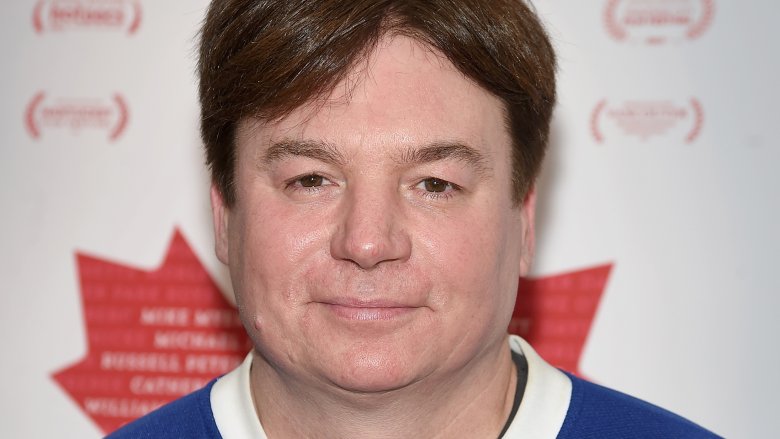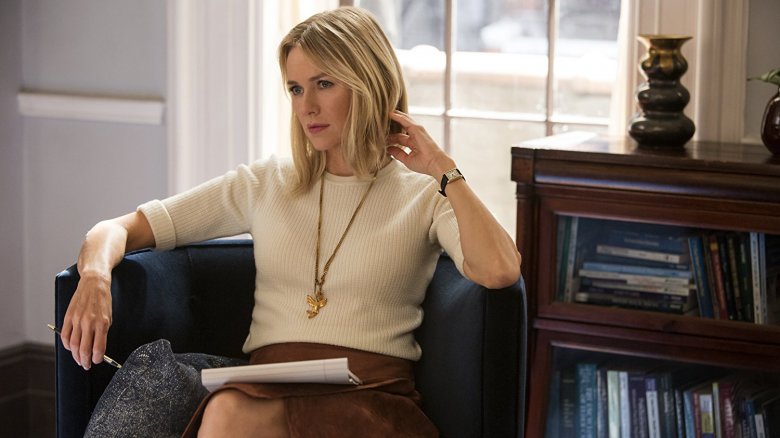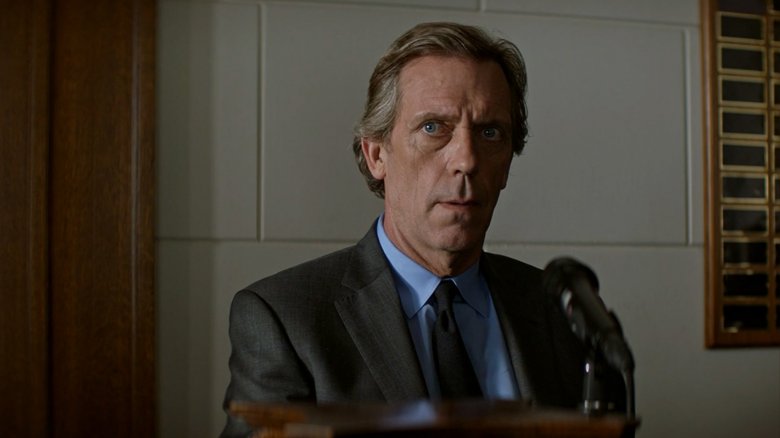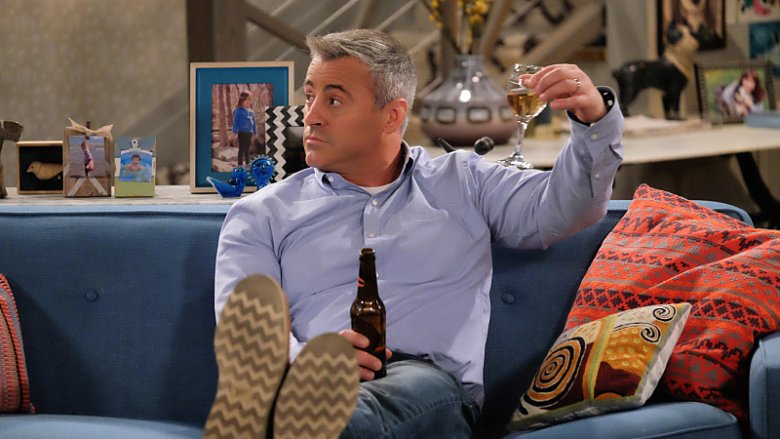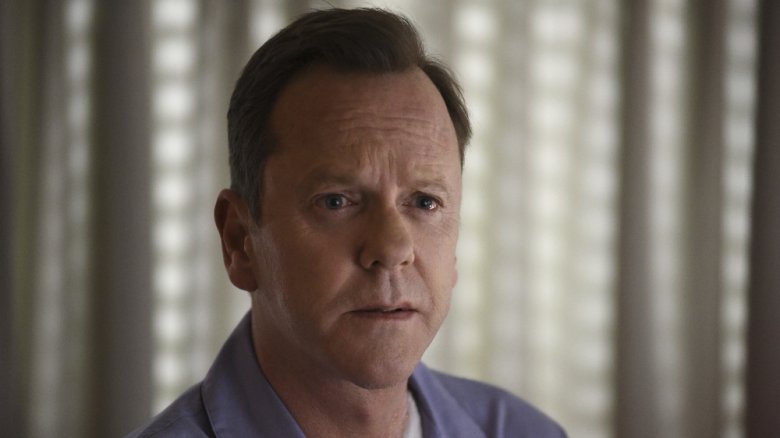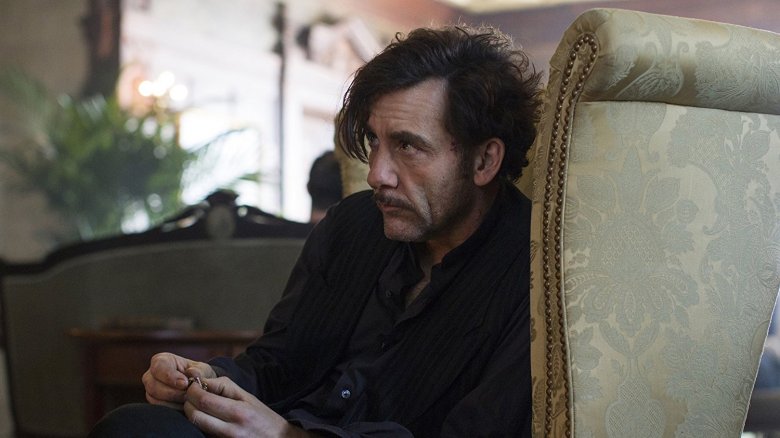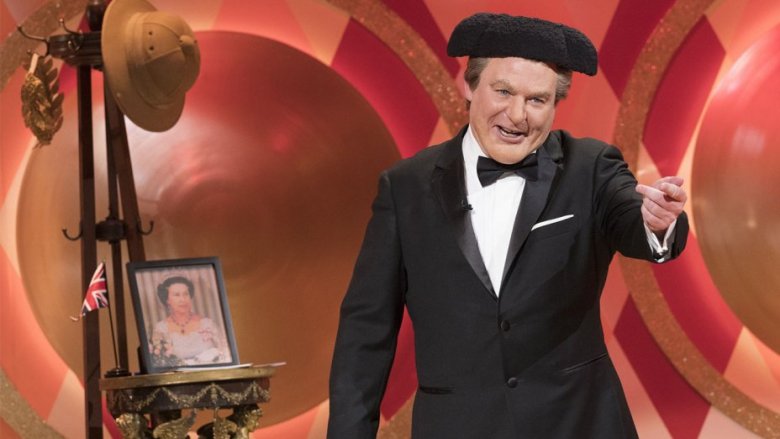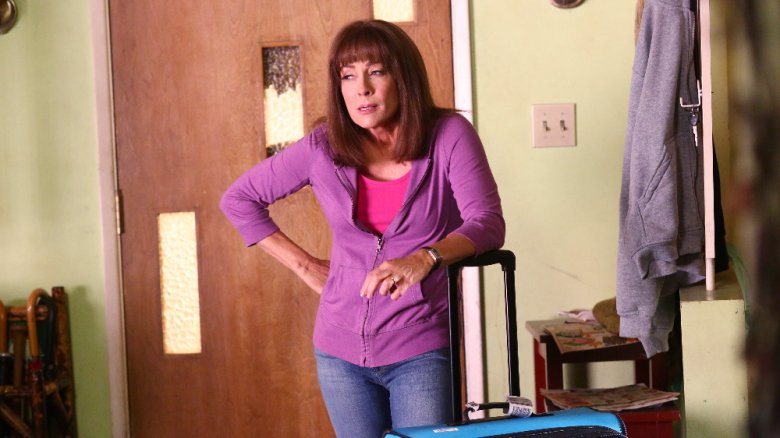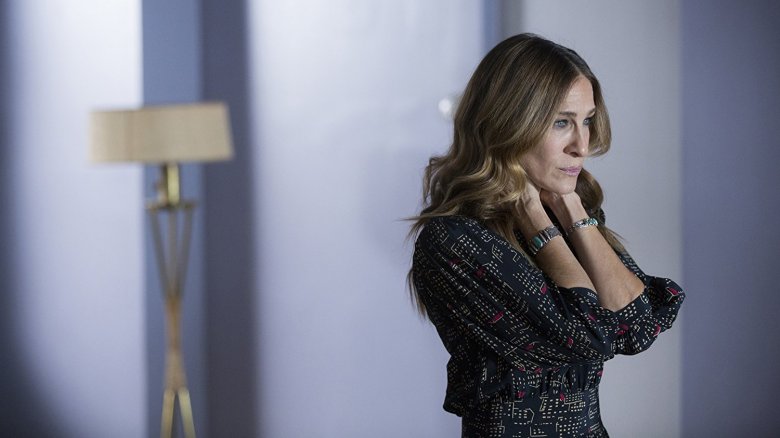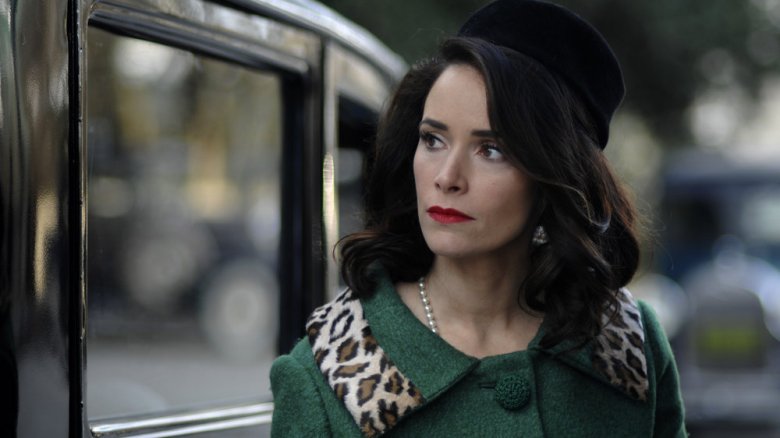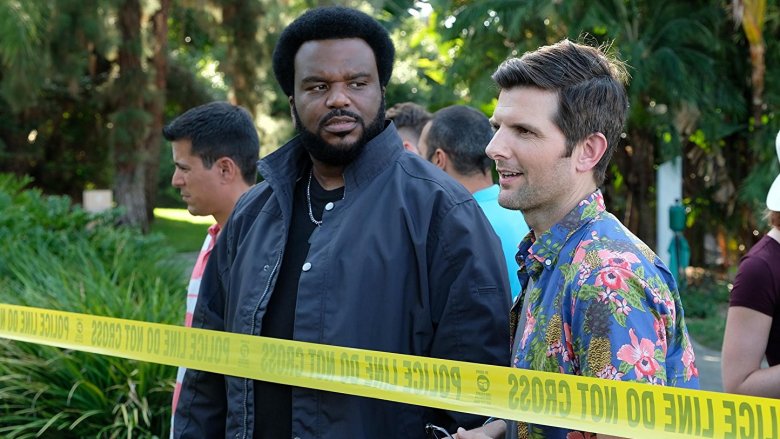Stars Who Got Big Paychecks For Low-Rated TV Shows
The TV world has changed drastically in recent years, and the next few are likely to see even more shakeups. As the industry shifts, networks are turning to familiar standbys to try and find ways to pull in viewers presented with increasingly numerous and varied entertainment options. As a result, they're more willing to shell out top dollar for big creators and stars, banking on familiar names to bring in the ratings.
Occasionally, these gambles pay off, with stars helping to launch not only their own shows, but other series in their scheduling block as well. However, sometimes networks find that paying big stars big money isn't actually enough to bring in viewers, with their efforts resulting in disappointingly low ratings. Often, this leads to an early cancellation, although sometimes shows get the chance to stick around for longer thanks to their star power.
It all happens more often than you might think. Here's a look at just a few of the major stars who've pulled in big paychecks for low-rated TV shows.
Naomi Watts, Gypsy
Netflix has shown that they're willing to spend money to find hits, investing $8 billion in content in 2018. While this has yielded some huge hits for the streamer, it's also led to some pretty staggering misses, including Naomi Watts' sensual drama Gypsy.
Watts is a two-time Oscar nominee and a hugely talented performer, but you wouldn't know it from her lackluster work as Jean Holloway, a therapist who gets dangerously close to her patients, on Gypsy. The show was trashed by critics, earning a dismal 36 percent on Rotten Tomatoes.
The show appears not to have found many viewers, either — it was canceled after just one season. Watts, though, took home a pretty staggering paycheck for her work, earning $275,000 per episode for the ten-episode season. Not bad for her first major television starring role, but not the kind of cash you want to be putting forward for a show that fails to find an audience.
Hugh Laurie, Chance
Hugh Laurie is a two-time Golden Globe winner and four-time nominee for his role as the crotchety doctor Gregory House on the Fox medical drama House, and getting the chance to get him scrubbed up again should have been an easy win. However, that wasn't the case for the Hulu drama Chance, which featured Laurie in the leading role but still failed to find an audience.
Chance featured Laurie as Dr. Eldon Chance, a forensic neuropsychiatrist who gets overly involved with a troubled patient (Gretchen Mol) with multiple personalities. Although the series was beloved by critics, it went almost entirely under the radar, failing to attract much buzz despite its positive reception and big-name star.
Hulu gave the series a 20-episode, two-season order without even seeing the pilot, and their risky move seems to have cost them, with Laurie getting $275,000 per episode for a series few subscribers ended up watching. Still, with Laurie's name attached and an exciting premise, it's easy to see why Hulu though the show would succeed — but in the era of peak TV, a big name isn't always enough.
Matt LeBlanc, Man With a Plan
Matt LeBlanc secured his place on the perpetual TV A-list thanks to his long-running performance as Joey Tribbiani on the wildly popular Friends. Since then, he's made a few attempts at launching his own show, most successfully with Showtime's Episodes. Since that series ended, he's been trying to make his way in the multicam world again with his CBS sitcom Man with a Plan.
Although the series has done well enough to earn three seasons, ratings have fallen over its run, averaging 6.3 million viewers in its first season and 5.79 in its second. While these numbers are nothing to scoff at, the series does significantly worse with the 18 to 49 demo, which advertisers really cater to: the show averaged just a 1.24 rating in its first season and a 0.98 in its second.
Be that as it may, LeBlanc is taking home a pretty hefty paycheck for his work, making $200,000 per episode. This is the same amount Kevin James made for his CBS sitcom Kevin Can Wait, which topped Man with a Plan in the ratings but didn't end up earning a season three renewal. (Man with a Plan is owned by CBS TV, while Kevin Can Wait is not, likely factoring into the decision.) Hopefully, LeBlanc's sitcom rises in the ratings soon.
Kiefer Sutherland, Designated Survivor
Kiefer Sutherland has had a lot of success on TV, leading nine well-reviewed and well-rated seasons of Fox's 24 and winning a Golden Globe for his efforts. His star power helps explain why ABC was willing to shell out $300,000 an episode to get him to star on their twisty political thriller Designated Survivor.
However, the move didn't work out exactly as planned. The show, which starred Sutherland as Thomas Kirkman, a low-level U.S. Cabinet member who becomes the de facto president of the United States after the rest of the line of succession is killed in an explosion, was lackluster in the ratings despite positive reviews from critics.
Sutherland's name was enough to earn the show a second season renewal, but it didn't make it to a third. The series' final episode before its cancellation averaged just under four million viewers and a 0.72 in the key demo — not exactly the kind of numbers you want when you're paying your star millions of dollars.
Clive Owen, The Knick
Cinemax hasn't made huge waves in the original content world, but they did land a buzzy period drama in The Knick, which told the story of the surgeons, nurses, and staff at the Knickerbocker Hospital as they pushed the boundaries of medicine, often in gruesome ways. Ocean's Eleven mastermind Steven Soderbergh executive produced the series and directed every episode.
The drama gained even more prestige when it landed Oscar nominee Clive Owen in its leading role. Owen got the big bucks for his first foray into television, earning $250,000 per episode. With his name attached, Cinemax was confident enough in the show to renew it for a second season before the first even aired.
Two seasons, though, wound up being all The Knick would get. Although the show was lauded by critics and earned Owen a Golden Globe nomination, it failed to ever find a solid audience. Soderbergh actually made the decision to kill off Owen's character in the season two finale, and he said that move marked the end of the characters' arcs.
Mike Myers, The Gong Show
Mike Myers went method for his gig as the host of ABC's rebooted The Gong Show. The actor went in full disguise as British comedian "Tommy Maitland," a fake performer with a whole list of fictional past credits.
Myers' character work earned him a $3 million paycheck for the 10-episode first season. He was rewarded with positive reviews from critics, with the show earning a 90 percent rating on Rotten Tomatoes. However, it failed to bring in the massive numbers that reality shows like America's Got Talent and The Voice pull in, starting with moderate ratings and falling throughout its run.
The series kicked off with 3.89 million viewers and a 0.9 rating in the key 18-to-49 demo. By the end of its run, it had dropped to a low of 2.1 million viewers and a dismal 0.5 rating in the demo. Although this isn't exactly anything to write home about, it was enough to earn the show a season two renewal, with Myers returning. Hopefully this time, that massive paycheck leads to massive ratings.
Patricia Heaton, The Middle
Patricia Heaton won two Emmys and earned five more nominations for her performance as family matriarch Debra Barone on Everybody Loves Raymond, so when the opportunity arose to get her on another sitcom, ABC was willing to shell out $250,000 per episode, which is what Heaton earned for her time on ABC's The Middle.
The Middle was never a bad ratings performer, but it was never particularly impressive either. The series' eighth season averaged just over six million viewers and a 1.48 rating in the key demo. Although this was enough for the sitcom to hold its own, the network ultimately decided to end the show with its ninth season.
At the time of the cancellation, executive producer DeAnn Heline noted that she was very grateful that the "under-appreciated" show was able to stay on the air for nine years. With continued moderate ratings and the cost of keeping Heaton on board, it may be tough to see why ABC kept the show around so long, but The Middle played an important part in establishing the network's family comedy brand, helping to explain its longevity.
Sarah Jessica Parker, Divorce
Getting Sarah Jessica Parker back on TV after her run on Sex and the City is a pretty big deal, so it makes sense that HBO was willing to pay heavily to get the actress to star in their series Divorce. The show, which stars Parker as one half of a recently divorced couple, earned the actress $275,000 per episode.
The show was not met with a positive reception in its first season, though. Although Parker earned a Golden Globe nomination, it got mixed reviews, hitting a 63 percent on Rotten Tomatoes. With the show airing on HBO, demands for high viewership are a little less strict, but it still earned only an average of 0.6 million viewers and a 0.19 rating in its first season.
The show earned a second season renewal, and was rewarded significantly better critical reviews for its sophomore outing. However, the ratings fell even further, averaging just 0.495 million viewers and a 0.13 rating in the demo. This makes it one of the lowest-rated comedies on HBO, below Ballers, Insecure, Curb Your Enthusiasm, Silicon Valley, Vice Principals, Veep, and new entry Barry. Not great when you have a huge star on board.
Abigail Spencer, Timeless
NBC's twisty procedural Timeless has had on odd journey on the small screen. The series, which stars Abigail Spencer, Malcolm Barrett, and Matt Lanter as three people recruited to use time travel to stop villains from changing history, premiered to positive reviews but had dismal ratings, leading to it being canceled after its first season.
However, that wasn't the end of the road for Timeless. Fans took to social media to express their outrage over the show's cancellation, and NBC reversed its decision and decided to keep it around for another season. However, ratings fell even further, with the show averaging just 2.5 million viewers and a 0.61 rating in the key demo, down from 4.6 million viewers and a 1.1 rating in its first season.
The show's ratings and its expensive premise put a season three renewal up in the air, with Spencer's big paycheck potentially exacerbating the difficult decision. Over the first two seasons, she took home $75,000 per episode — not an incredibly hefty fee, but maybe a bit too much for a show struggling in the ratings.
Craig Robinson and Adam Scott, Ghosted
Adam Scott and Craig Robinson are the kings of workplace comedies, having starred on NBC's wildly successful Parks and Recreation and The Office. With their backgrounds, it's easy to see why Fox was excited about their paranormal workplace comedy Ghosted, which was ordered to series in 2017 with Robinson and Scott each commanding $125,000 per episode.
The show features Robinson as a cynical skeptic and Scott as a genius "true believer" in the paranormal who are recruited to look into rampant "unexplained" activity in Los Angeles. Although it earned mostly positive reviews from critics and had two well-liked stars attached, it failed to find much of an audience, averaging 2.9 million viewers and a 1.7 rating.
Fox still liked the show enough to give it an additional six episodes beyond its initial ten-episode order, and they even brought on The Office's Paul Lieberstein as a new showrunner. Although Fox execs weren't quick to cancel Ghosted, its lack of huge ratings and the stars' hefty paychecks made it tough to sign off on an early renewal.
